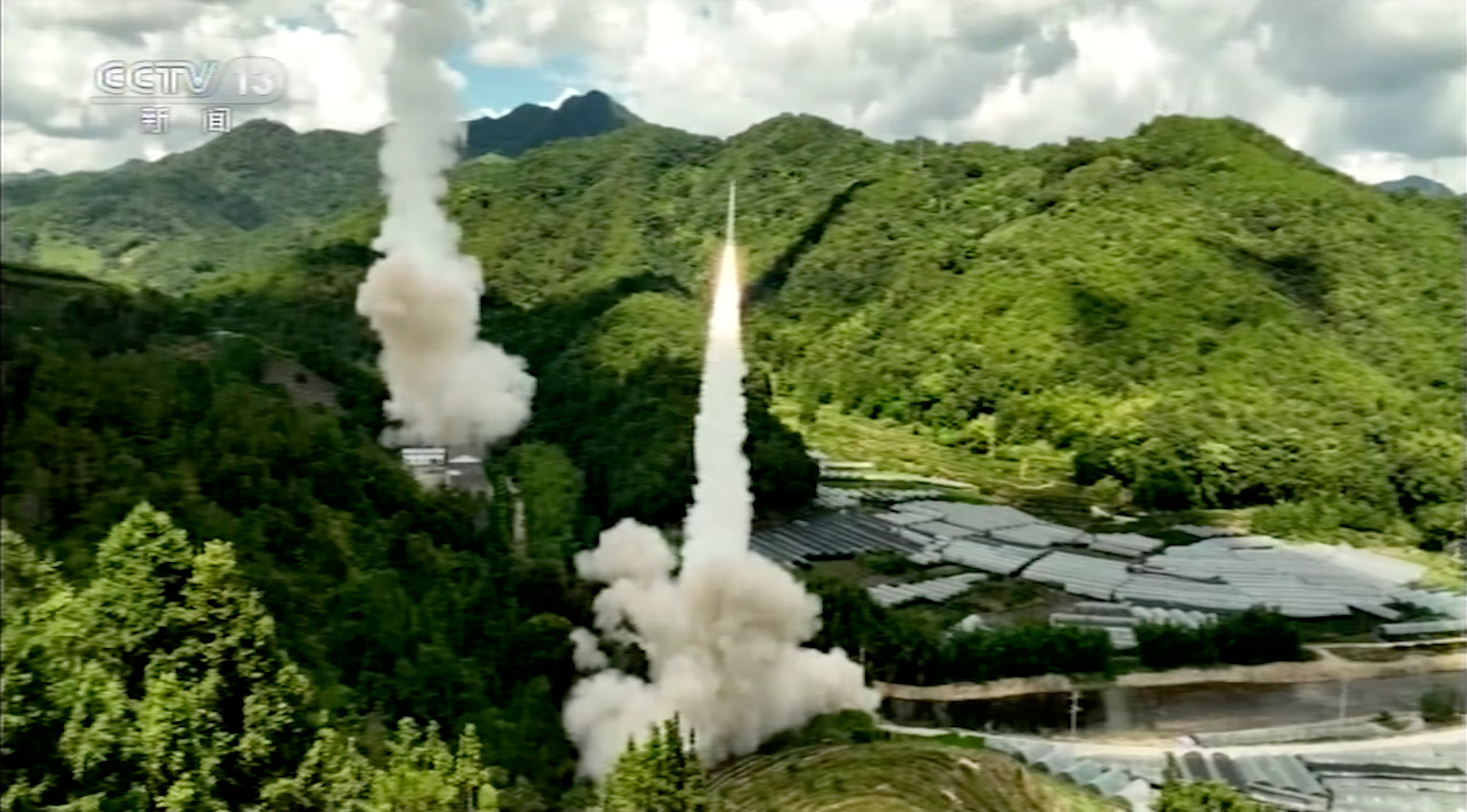Marine Commandant Gen. David H. Berger has elected to shed the time-tested potency of the Corps’ signature self-sufficient combined arms Marine Air-Ground Task Force.
His haste to do so appears to be his eagerness to secure a service role in defending Taiwan and containing China.
Yet, the commandant’s Force Design 2030 team members defend the changes. Their analyses of expeditionary advance base operations war games and experimentation prove the Marine Corps is a key contributor to victory in the U.S. Indo-Pacific Command’s Taiwan contingency.
However, information obtained from open-source literature reveals examples of how the new EABO doctrine is destined to fail.
RELATED

The Corps’ expeditionary advance base operations plan requires distributed small units in the 1st Island Chain to practice concealment and emissions control across the electromagnetic spectrum 24/7.
The expectation is utopian. It underestimates China’s integrated, space, terrestrial, marine, intelligence, surveillance and reconnaissance network.
China operates 250-plus advanced space surveillance platforms and possesses numerous commercial imagery systems licenses, according to the Defense Intelligence Agency. The disciplined Chinese also hold unacknowledged war reserve mode capabilities close to the chest.
China’s quantum computing capabilities overmatch those of the U.S., data from the South China Morning Post show, and are built for dual military-civilian access, according to the International Institute for Strategic Studies.
China will be able to crack our secure communications, Theresa Payton, former White House chief information officer recently wrote in Newsweek, and mash electromagnetic spectrum and cyber data with other data collected from its regional ISR network in real-time.
Since deception is critical for EABO, our efforts to conceal and mislead as to the strength, locations and missions of Marine Corps small units will be rendered transparent.
Marine Corps Tomahawk and Naval Strike Missiles are currently subsonic ― while China already has fielded a family of precision hypersonic missiles, including infrared homing.
Immediately following any Marine Corps launch, the Chinese will know the point of launch and the type of missile through the mature technique of plume spectral analysis, multiple sources show. If the Chinese counter-fire on detection, at Mach 3 to Mach 5 or higher, their missiles will reach our Marines before our missile even hits its land or sea target. Shoot and scoot is unrealistic.
The 1st Island Chain has been China’s backyard for centuries. Overseas Chinese with familial, government-to-government, trade and private business relations saturate the region.
Every militarily useful piece of terrain in and along the 1st Island Chain surely has been mapped, and some possibly covertly occupied in anticipation of our arrival. Pre-existing Chinese human intelligence networks are robust, and U.S. expeditionary advance bases will be compromised even before they are established.
Cooperation of our allies is not guaranteed.
For example, the Republic of the Philippines does not want to become a Chinese satellite, but it wants even less to become a proxy nuclear battlefield.
The Philippines tolerates U.S communications, logistics and ammo storage facilities on its territory. But when country officials recently expressed concern that the U.S. might be storing nuclear weapons, cooperation almost ceased.
If our plan is to establish expeditionary mobile bases that host nuclear “capable” Tomahawks those suspicions — and China’s suspicions — will become acute.
China will tolerate high casualties to counter what it perceives as an existential threat to its territorial integrity and sovereignty. In contrast, the U.S. will not, as Taiwan’s fate is not a core U.S. national security priority.
In addition to the quality of its military, China’s command economy permits mass weapons and munitions production to a degree the U.S. model cannot for an ultimately optional foreign expedition.
Finally, China will exploit its mass and internal lines advantages, as well as the U.S.’ geographic disadvantages, to maximize its historically successful penchant for surprise.
Berger still has more than a year to make his Force Design 2030 changes permanent. His hand-picked successor will be cut from the same cloth.
After four additional years of solidification of the new doctrine and war-fighting kit, the MAGTF philosophy will be rotted out of our Corps’ culture.
The carnage inflicted on faithful Marines and sailors aboard expeditionary mobile bases will serve the purpose as a tripwire to enrage the public and escalate the conflict.
But Taiwan always will mean more to China than the U.S. We will lose a fight for Taiwan due to the U.S.’ unwillingness to endure the losses when the cause was never existential to our nation’s survival.
Regardless of how it plays out, China’s regional overmatch portends EABO’s futility and a certain U.S. defeat. We should abandon Force Design 2030 while there is still time.
Instead, we can provide better service by returning to our global focus as a combined arms force in readiness that employs scalable MAGTFs for the broad variety of missions they were intended.
Franz J. Gayl enlisted in 1974, serving as an 0351 and leaving as a sergeant in 1979. He was commissioned in 1983, serving as an 0302 infantry officer and retiring as a major in 2002. He then served as a GS-15 science and technology adviser in Headquarters Marine Corps, retiring in 2022.
Have an opinion?
This article is an op-ed and as such, the opinions expressed are those of the authors. If you would like to respond, or have an editorial of your own you would like to submit, please email Marine Corps Times Editor Andrea Scott at ascott@militarytimes.com.
Want more perspectives like this sent straight to you? Subscribe to get our Commentary & Opinion newsletter once a week.




